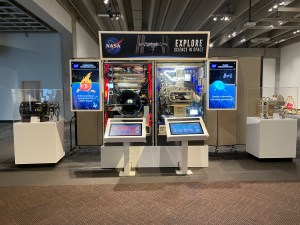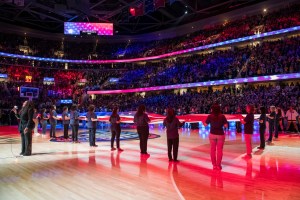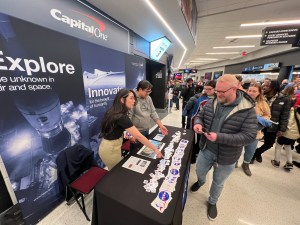Credits: NASA/ Heather Brown with images provided by ISMA photography courtesy of Jim Feeney and Sandusky VR/360 video footage courtesy of Ad Source, Inc. and Akron Drone Services. Oswego photo courtesy of Robert Clark.
Mike McVetta first screeched around an Ohio racetrack atop a tangle of pipes on wheels at 9 years old, but he believes he joined the racecar world late. He plans to put his son in his first car when he turns 5 years old.
“It’s a family thing,” said McVetta, whose grandfather, uncles, and father have all been involved in the sport. “It was a big part of growing up for me, and I think it really pushed me toward engineering.”
Years later, he puts his love for mechanics to the test by racing hand-built cars and working as the facility manager for NASA Glenn Research Center’s Electric Propulsion and Power Laboratory (EPPL).
Driving a variety of racecars throughout adolescence, McVetta even competed against international drivers while in college. After earning a degree in mechanical engineering from the University of Toledo, he started as a test engineer at NASA.
Now, McVetta puts the pedal to the metal overseeing the EPPL’s 40 staff members and coordinating testing at the facility. The massive lab’s 25 chambers can subject thrusters, which propel spacecraft, to thermal and vacuum conditions that mimic the environment of space.
“It’s expensive to test anything in space, so it’s much more cost-effective to test in one of our vacuum facilities,” he said.
While at the lab, McVetta has helped tackle projects ranging from testing the Power and Propulsion Element for Gateway (a lunar outpost for NASA’s Artemis mission) to future solar array designs.
Each day at the crack of dawn, McVetta heads to NASA, where he spends hours arranging budgets, coordinating with test customers, and giving tours. Back at home, after sharing a meal with his wife and tucking his young son and daughter into bed, he gets “racecar-building time” until midnight in his shop.
McVetta’s favorite yellow-and-red rig is fashioned from a metal-tubed frame, a fiberglass body, and a massive “wing” on the back that helps with speed and turning.
Before a race, McVetta dons layers of protective gear, fire-retardant shoes and gloves, and a yellow helmet. Laser-focused on the competition, he straps into his seat, situated directly above a thrumming fuel cell.
“Being all home-built, unique vehicles, there’s failures and plenty of wild rides,” he said. “But it happens so fast, so there’s no time to think.”
Hurtling around a track at 150 miles an hour and whizzing past a stadium packed shoulder-to-shoulder with people, McVetta won the biggest race in the state for his class of cars, the Sandusky Speedway Hy-Miler Nationals, on July 24.
Over the years, McVetta’s motivation for racing has changed.
“If you would’ve asked me five years ago, I would have said it’s the winning,” he said. “Now, it’s seeing the excitement of my kids, both for what I do at NASA and with the racecars.”
With such a demanding career and hobby, it helps to have family as a support system.
“They’re my biggest fans,” he said.
Ellen Bausback
NASA’s Glenn Research Center





























